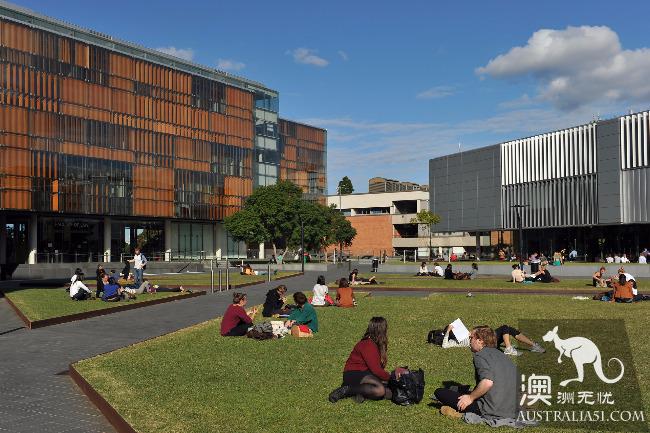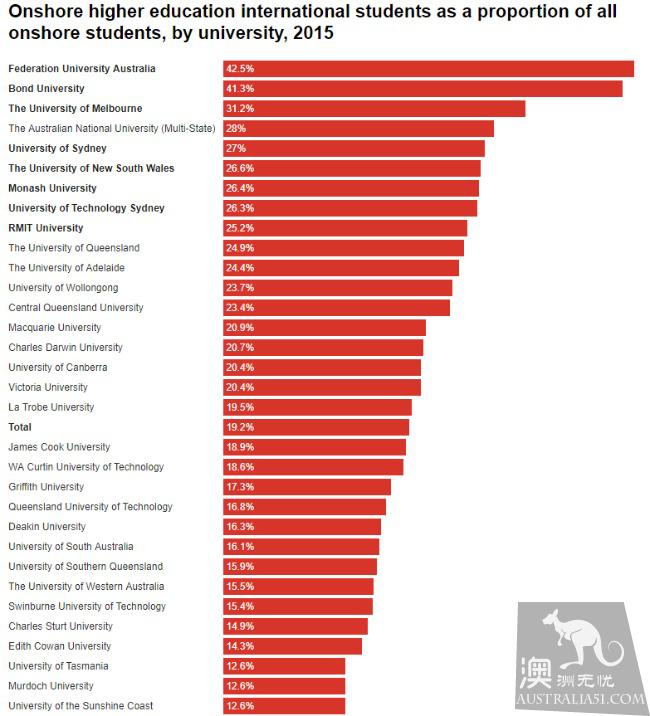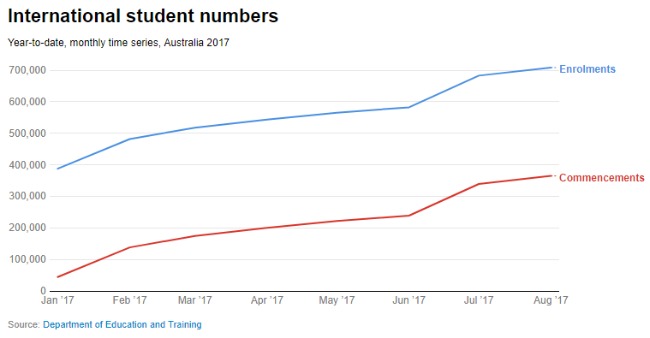
In 2016 / 17, international students generated about A $28 billion in income to the Australian economy. (AP Photo)
By Julie Hal (Julie Hare), Institute of Advanced Honors, University of Melbourne
Article Source: The Conversation
Original title: we should ensure that the tide of international students continues (We need to make sure the international student boom is sustainable)
In the first seven months of this year, Australia welcomed six hundred and eighty five thousand international students, half of whom went directly to Australian universities for undergraduate and master`s degrees after taking intensive English courses. This year, there were 81,999 more college students than in the same period last year, an increase of 15 percent. In stock-market terminology, this could be called a bull market.
The Australian Bureau of Statistics recently estimated that the economic impact of foreign students in 2016-17 was as high as A $28 billion, 4.4 billion higher than earlier estimates. The statistics interview students waiting for departure at the airport to better reflect their spending habits and family visits.
Foreign students in a big city
Australia is the third-largest destination for international students except the United States and the United Kingdom, with the highest international enrolment rate of 20%, which means that one in five students is an international student.
But international student enrolment is not evenly distributed across colleges and universities, with the emerging Chinese and Indian middle classes pouring into a handful of public and private colleges with campus upheaval, bringing them a lot of benefits. At the same time, some other colleges and universities are struggling to survive.
Federal goverment data clearly show that in 2015, (Federation University), a federal university in Balarat, Victoria, had the highest percentage of international student enrolment rates, reaching 42.5 percent. However, the vast majority of them study in Melbourne`s downtown campus. There are also six universities with international student enrolment rates of more than 25%, all in Melbourne and downtown Sydney. Sydney and Melbourne attract 65% of international students, while only 10% go to remote areas.

Percentage of international students in higher education in China as a percentage of the total number of students in 2015 (distribution of). (The Conversation data by university)
* the calculation of domestic students is less than that of other reports, as this survey excludes students from distance education.
Earlier this year, the Burns Council (Committee for Perth) released a report that lamented that Western Australia had failed to benefit from the overseas student boom, and that international student enrolment had declined over the past 15 years. To make matters worse, half of Western Australia`s international students are registered overseas campuses, particularly (Curtin University) `s Malaysian, Dubai and Singapore campuses.
Why is that? Western Australia also has an advantage over other states in jet lag, consumption and lifestyle. The reasons for the lack of international interest in Western Australia are unclear, especially among Chinese students in Perth and surrounding areas. The Chinese account for 1/3 of the total number of students studying in Australia, but only 13.8% of the students studying in Western Australia.
Centralization affects Infrastructure and Housing Construction
Concerns over the concentration of students in Sydney and Melbourne`s inner urban areas are hampering infrastructure, pushing up house prices and rents and forming settlements in parts of the country.
To make matters worse, colleges and universities in remote areas have begun to build high-rise campuses in the inner city in order to get a piece of it, adding to the pressure on the already overburdened inner part of the city.
A recent report by CoreLogic, a property analysis firm, found that 65% of Melbourne`s downtown residents were not Australian citizens, and 54% of (Haymarket) `s non-Australian citizens in Sydney. Melbourne`s Clayton (Clayton) and Carleton (Carlton) ratio has also been floating around 50%. Sydney and Melbourne also have 17 other urban areas, as well as a small number of districts in Brisbane, Perth, Adelaide and Canberra, where 35% of international students live on a temporary basis.

Number of international students in Australia, 2017 (monthly). (The Conversation data picture)
* data from the Ministry of Education and training.
The question is, why? The cost of living in the inner city, even by world standards, is prohibitively expensive, not to mention unscrupulous landlords who deliberately exploit tenants who don`t know the truth.
The 2016 Sydney University of Science and Technology report to Sydney`s government also showed this phenomenon and pointed to the high cost of transportation. The difficulty of finding a job (20 hours a week for international students) and the cultural childish appearance of international students make them vulnerable to exploitation. They are also very difficult to integrate with the local people. The report also cited alcohol and, gambling, sexual and mental health problems that are often undetected and thus become a drag on foreign students` lives.
But on the plus side, despite a series of security incidents targeting international students, such as the 2008-09 and 2016 Melbourne attacks on international students, our inner city is generally safe.
What needs to be ensured now is that staying in campus upheaval is not affected by these negative experiences and inadequate urban affordability. Marketing and messaging are important to attract overseas students to Australia, but we also need to encourage them to look beyond the two major cities.
The importance of tourism has been noticed by politicians, but international education is largely dependent on self-sufficiency, despite the economic benefits it has brought. So what we need is real, orderly, feasible, focused and strategic regulation in the field of international education, so as to ensure that it maintains a good reputation and financial health and continues to grow.

